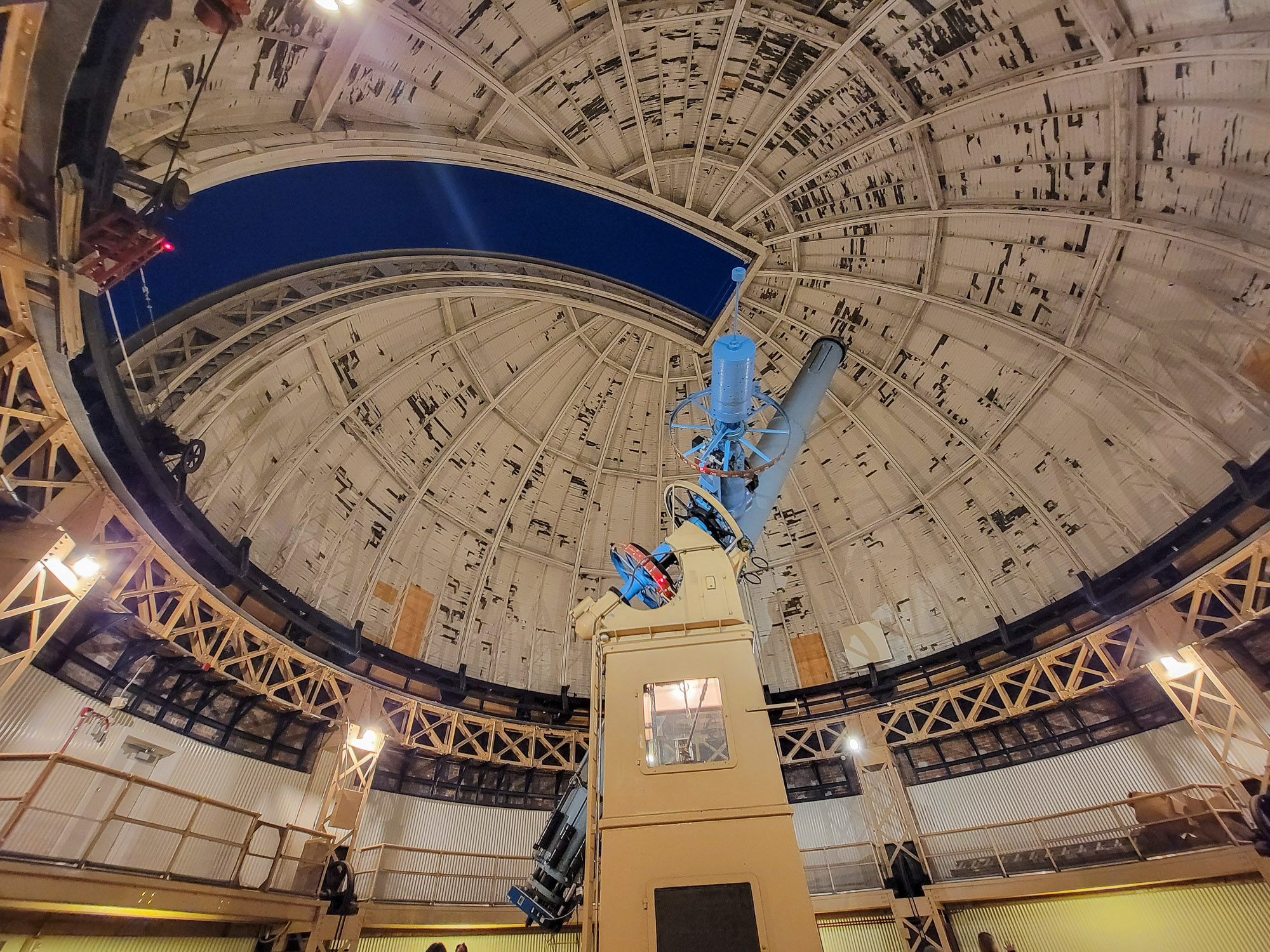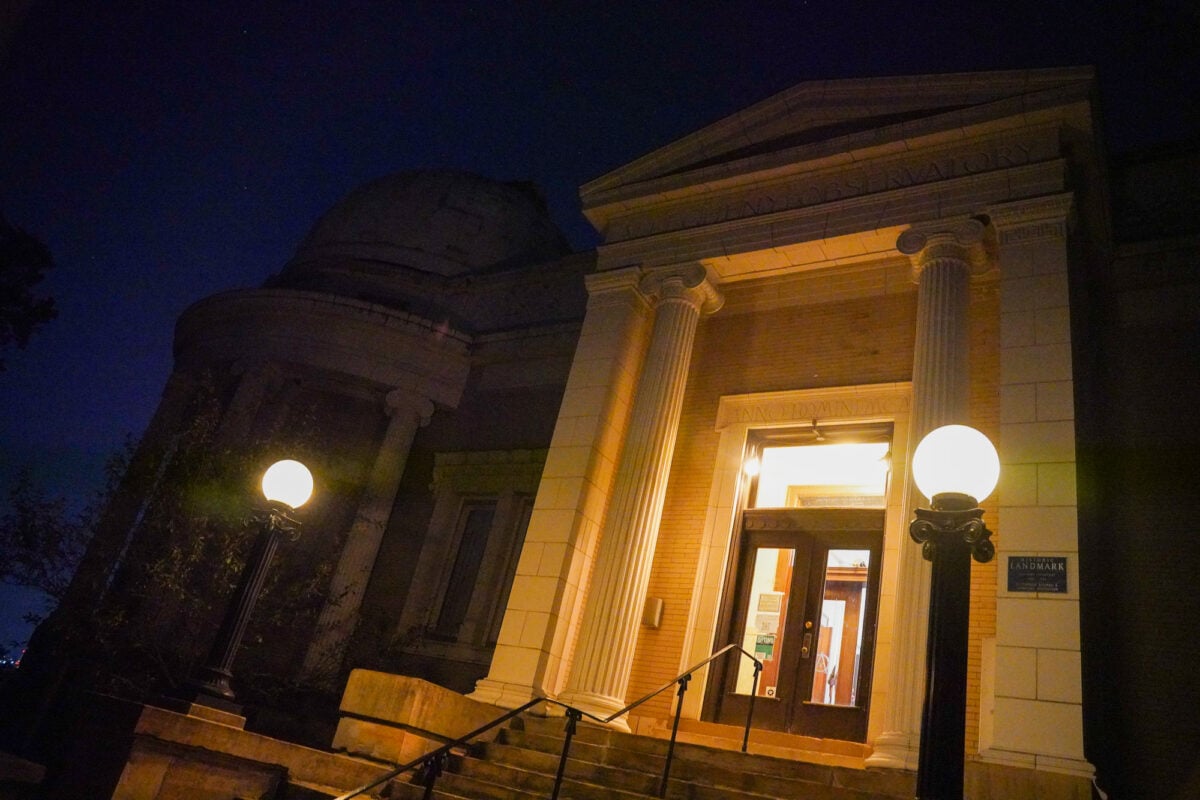Published by Jeremy. Last Updated on July 12, 2024.
Disclaimer: Our site uses demographic data, email opt-ins, display advertising, and affiliate links. Please check out our Terms and Conditions. Pricing, operating hours, or menus may have changed since our initial visit and may not be reflected in subsequent updates. Please confirm these directly with any business or attraction prior to visiting.
I have to admit, I’m rather crazy about astronomy. I took several courses in astronomy in college and love getting out to observatories and dark sky locations all over the world just to be able to have a clear look out into the cosmos.
While Pittsburgh’s skies aren’t the best for stargazing, we do have a rich history of all things astronomy. For those who are interested in the field, a visit to the Allegheny Observatory in Riverview Park is a must to learn about notable local astronomers, their contributions to several scientific fields, see historic telescopes, and, if you’re lucky, look through one on a clear summer or fall night!
Learning Pittsburgh’s Astronomy History
Tours at Allegheny Observatory can be broken up into two distinct themes. The first is learning about the history of astronomy in Pittsburgh, and the second is getting to learn how the astronomy’s telescopes work with a first-hand look.
Pittsburgh’s impact on the world of astronomy and aerospace at large is quite notable. During a tour, you’ll learn the histories of two famous Pittsburgh residents, Samuel Langley and John Brashear.
Samuel Langley moved to Pittsburgh in 1867 as a professor at the Western University of Pennsylvania (now Pitt) and was trusted to restore the original Allegheny Observatory which was originally closer to the city in Perry South. Langley started maintaining time measurements for US railroads based on astronomical time, helping the railways run on a standardized time which minimized the risk of accidents amongst other improvements. Langley later went on to try and be the first to achieve manned flight in aviation, and while the Wright Brothers beat him, many of his studies and equations were integral to their success.
John Brashear was a millwright at a steel mill and amateur astronomer with his wife, Phoebe Stewart, and built his own telescope in his shed at his home workshop. After having many notable visitors, Brashear ended up expanding his operations, became director of Allegheny Observatory, and created some of the world’s best astronomical mirrors using a process he invented (now known as the Brashear Process).
While you learn far more about these two notable figures and their contributions to the Allegheny Observatory, the introduction into their background really helps shape everything you see while on tour- from the stones laid for the building paid for via local fundraising to the crafted telescopes and the impacts their discoveries have made on the world at large.
Get a Chance to Look Through a Telescope on a Clear Night
After learning about Langley and Brashear, you get a chance to walk through two observatory rooms featuring telescopes (the 30″ diameter Thaw Refractor built in 1912 and the 13″ diameter Fitz-Clark Refractor built in 1861) while getting a chance to learn more about their design, how they function, and the kinds of research each telescope has conducted over the years.
During our visit, one particular study that was shared discussed how astronomers took photos of distant stars to try and determine if any exo-planets may be crossing their orbit. While modern techniques approach this one differently than they did many decades ago, it was a fascinating look into how astronomy evolved well before the era of the computer!
If you’re lucky and visit on a clear night, you may even get a chance to peer out into the cosmos through the Fitz-Clark Refractor. During our mid-July visit, the clouds cleared up right before we entered this portion of the observatory and we got a chance to see some beautifully clear views of craters on the moon- a real treat that we were surprised to be able to experience!
Apart from learning about notable astronomers, telescopes, and the history of astronomy in Pittsburgh from skilled docents, perhaps the best part about the tour of the Allegheny Observatory is that it is completely free to visit. Tours typically are on select weeknights in the summer and fall months and require advanced registration. Beyond these, the observatory offers other programming including a fall open house, a public lecture series, and several children’s oriented programming throughout the year as well!
So whether you want to visit the observatory to learn about its history, how telescopes work, or simply to have a chance to see a celestial wonder on a clear night, this tour is a must experience!
The Allegheny Observatory is part of the University of Pittsburgh and is located at 159 Riverview Avenue in Riverview Park in Pittsburgh’s North Side.











